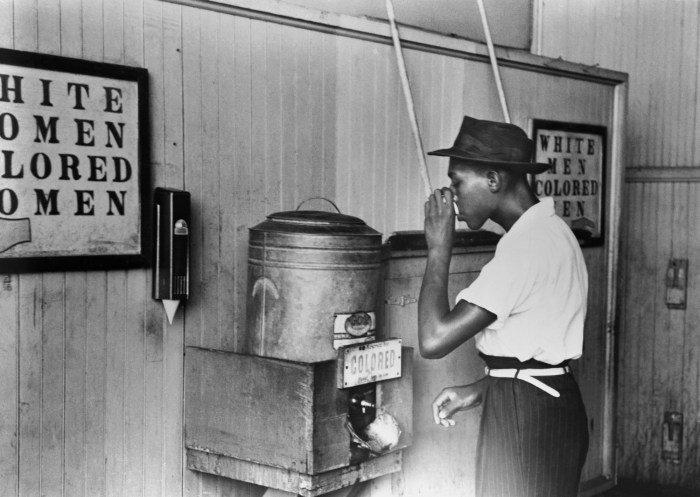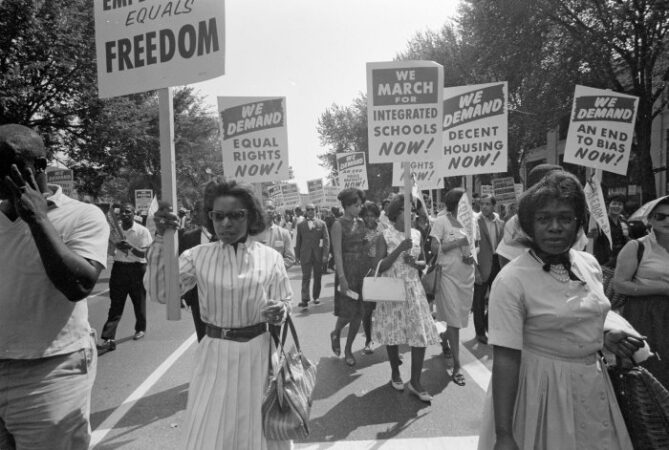
When did the Jim Crow laws end? This question, while seemingly straightforward, delves into a complex chapter of American history marked by systemic racism and the fight for equality. The Jim Crow era, spanning from the late 19th century to the mid-20th century, was a period of legal segregation and disenfranchisement of African Americans in the South. It was a time of discriminatory laws, social customs, and practices that aimed to maintain white supremacy and limit the rights and opportunities of Black Americans.
The Jim Crow laws were a direct result of the failure of Reconstruction, a period after the Civil War when the federal government attempted to protect the rights of formerly enslaved people. As federal troops withdrew from the South, white Southerners regained political control and enacted a system of laws designed to suppress Black political participation and economic progress. These laws, known as Jim Crow laws, were enforced through a combination of legal, social, and economic means.
The Civil Rights Movement

The Civil Rights Movement was a period of major social activism in the United States from the 1950s to the late 1960s, focused on achieving equal rights and opportunities for African Americans. It was a complex and multifaceted movement, encompassing various strategies, individuals, and events that significantly shaped the nation’s history and social landscape.
Key Events and Figures
The Civil Rights Movement witnessed numerous pivotal events that galvanized public attention and propelled the struggle for racial equality forward.
- The Montgomery Bus Boycott (1955-1956): This boycott, sparked by Rosa Parks’s refusal to give up her seat on a bus to a white man, lasted for over a year and led to the desegregation of public transportation in Montgomery, Alabama. It also marked the emergence of Martin Luther King Jr. as a prominent leader of the movement.
- The Little Rock Nine (1957): Nine African American students were met with fierce resistance as they attempted to integrate Central High School in Little Rock, Arkansas. President Eisenhower ultimately deployed federal troops to protect the students and enforce the Supreme Court’s desegregation ruling.
- The March on Washington for Jobs and Freedom (1963): This historic event brought together hundreds of thousands of people in Washington, D.C., to demand civil rights legislation and an end to racial discrimination. It was at this march that Martin Luther King Jr. delivered his iconic “I Have a Dream” speech.
- The Selma to Montgomery Voting Rights March (1965): This march, aimed at securing voting rights for African Americans, was met with brutal police violence. The resulting national outcry led to the passage of the Voting Rights Act of 1965, a landmark piece of legislation that outlawed discriminatory voting practices.
The Civil Rights Movement was led by a diverse group of individuals, each with their own unique contributions and perspectives. Some of the most prominent figures include:
- Martin Luther King Jr.: A Baptist minister and activist who advocated for nonviolent resistance and became the movement’s most recognized figure. He played a pivotal role in the Montgomery Bus Boycott, the March on Washington, and the Selma to Montgomery Voting Rights March.
- Rosa Parks: Her refusal to give up her seat on a bus in Montgomery, Alabama, sparked the Montgomery Bus Boycott and catapulted her into the national spotlight as a symbol of resistance against segregation.
- Malcolm X: A Muslim minister and activist who advocated for self-defense and black empowerment. He challenged the methods and goals of the nonviolent movement, advocating for a more militant approach.
- John Lewis: A civil rights leader and Congressman who participated in the Freedom Rides, the March on Washington, and the Selma to Montgomery Voting Rights March. He was known for his commitment to nonviolence and his enduring dedication to social justice.
- Medgar Evers: A civil rights activist who was assassinated in 1963. He worked tirelessly to challenge segregation in Mississippi and became a symbol of the movement’s struggle against racial violence.
Strategies Used by Activists
Civil rights activists employed a range of strategies to challenge Jim Crow laws and advance the cause of racial equality. These strategies included:
- Nonviolent Resistance: This approach, championed by Martin Luther King Jr., emphasized the use of peaceful protests, boycotts, and sit-ins to challenge segregation and discrimination. This strategy aimed to expose the injustices of Jim Crow laws and to generate public support for change.
- Legal Challenges: Civil rights lawyers and organizations filed numerous lawsuits challenging the constitutionality of Jim Crow laws. These legal challenges often resulted in landmark Supreme Court decisions that struck down segregationist policies.
- Direct Action: This involved engaging in acts of civil disobedience, such as sit-ins at segregated lunch counters and freedom rides on interstate buses. These actions often resulted in arrests and violence, but they also drew national attention to the injustices of Jim Crow laws.
- Political Organizing: Civil rights activists engaged in political organizing to register voters, elect sympathetic officials, and advocate for legislation that would protect civil rights. This strategy aimed to build political power and influence the legislative process.
Role of Legal Challenges and Landmark Supreme Court Decisions, When did the jim crow laws end
Legal challenges played a crucial role in dismantling Jim Crow laws and advancing civil rights. The Supreme Court issued several landmark decisions that struck down segregationist policies and affirmed the principle of equality under the law.
- Brown v. Board of Education (1954): This landmark decision declared state laws establishing separate public schools for black and white students unconstitutional. The Court ruled that “separate but equal” was inherently unequal and violated the Fourteenth Amendment’s guarantee of equal protection under the law.
- Loving v. Virginia (1967): This decision struck down state laws prohibiting interracial marriage, declaring them unconstitutional under the Fourteenth Amendment. The Court recognized the right of individuals to marry whomever they choose, regardless of race.
- Harper v. Virginia Board of Elections (1966): This decision invalidated poll taxes as a requirement for voting, effectively eliminating a barrier to voting for many African Americans. The Court ruled that poll taxes violated the Fourteenth Amendment’s Equal Protection Clause.
Final Thoughts: When Did The Jim Crow Laws End

While the legal end of Jim Crow is often marked by landmark legislation like the Civil Rights Act of 1964 and the Voting Rights Act of 1965, the legacy of Jim Crow continues to cast a long shadow on American society. The systemic racism and inequality that were embedded within these laws have left a lasting impact on communities of color, perpetuating disparities in areas such as education, healthcare, housing, and employment. The struggle for racial justice remains a vital part of the American story, demanding continued vigilance and commitment to dismantling the structures that perpetuate inequality.
FAQ Resource
What were some specific examples of Jim Crow laws?
Jim Crow laws varied from state to state but often included provisions like segregation of public facilities (schools, transportation, restaurants), literacy tests and poll taxes to disenfranchise Black voters, and laws that criminalized interracial relationships.
How did the Civil Rights Movement contribute to the end of Jim Crow?
The Civil Rights Movement, fueled by courageous activists like Martin Luther King Jr. and Rosa Parks, utilized nonviolent protests, boycotts, and legal challenges to expose the injustices of Jim Crow and demand change. These efforts, coupled with growing public awareness and support, put pressure on the federal government to address the issue of racial segregation.
What are some examples of the lasting impacts of Jim Crow?
The legacy of Jim Crow continues to shape modern society, contributing to disparities in areas like wealth, education, and healthcare. The history of racial segregation and discrimination has created a system where opportunities and resources are often unequally distributed, leaving communities of color at a disadvantage.





